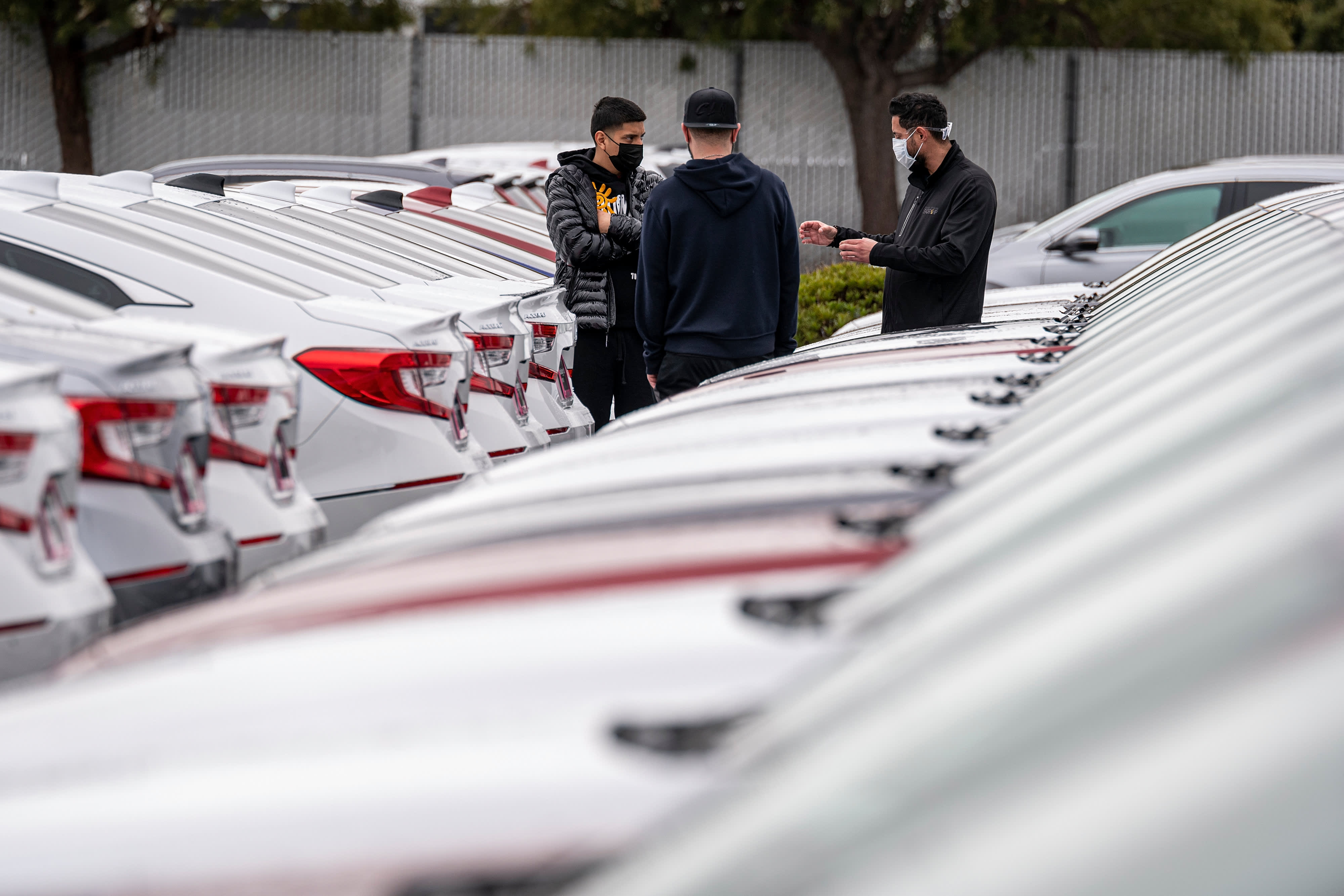
Customers wearing protective masks look at Honda Motor Co. cars. available for sale on Monday, February 15, 2021 at an AutoNation car dealer in Fremont, California, USA.
David Paul Morris | Bloomberg | Getty Images
Don’t look now, but the average monthly installment on a new car is approaching $ 600, according to Experian, which analyzes millions of new and used car loans.
“We are up year over year in 2020 at higher amounts than ever before, reaching record highs in loan amounts and record highs in payments,” said Melinda Zabritski, senior director of Experian’s automotive financial solutions team.
Experian’s latest auto finance report covers last year’s fourth quarter, when new vehicle sales improved, but were still well below the 2019 sales pace.
Nonetheless, those taking out loans to buy a new vehicle borrowed an average of $ 35,228, up nearly $ 2,000 from a year earlier. As a result, monthly loan payments soared by $ 13 to a record high of $ 576 according to Experian. Used vehicle loans also hit record highs, with consumers borrowing an average of $ 24,467, up from nearly $ 1,700 year over year.
Experian says monthly used car loan payments have increased by $ 18 to $ 413 – the first time the average exceeded $ 400.
“I can certainly remember when that ($ 400) was the average payment for a new car,” said Zabritski. “Those days are over. We are definitely over $ 400 and don’t expect it to fall.”
Car loans and payments are increasing as the price for all vehicles is rising at a rate few could have predicted a few years ago.
What’s behind the higher sticker prices?
For new vehicles, the demand for larger and more expensive SUVs and pickups means buyers are willing to pay more. Buyers are also increasingly opting for models with more technical features, from infotainment to driver assistance systems that help prevent accidents.
Prices of used cars and trucks are on the rise due to increased demand during the Covid-19 pandemic. That strengthened the already strong used car market, where about 40 million vehicles were sold last year, according to Zabritski.
Despite increased loans and higher payments, the number of consumers defaulting or falling behind on their car loan remains below the historical average.
“Most of the lenders I speak to and have had discussions with since mid-last year have all said they don’t see the delinquencies they expected to see,” Zabritski said. “So consumers have done well to stay up to date and keep those payments going.”